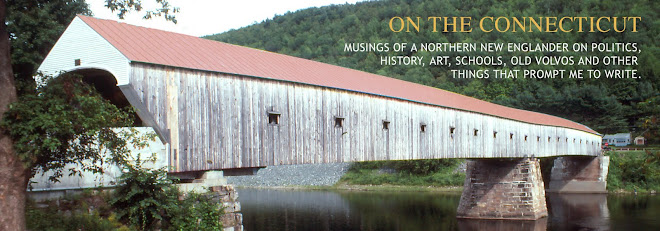The rented Chevy Cavalier toils along Highway 79, the old road from Tucson to Phoenix. With two aboard, the back full of luggage, and the air conditioning turned up high, the tired little four-cylinder engine is only able to maintain seventy when the old two-lane highway is level. The slightest incline overpowers the feeble power plant, and the car loses momentum.
"I knew we should have gotten a six cylinder car," Bob grumbles. "This turkey's got no guts at all."
"If I hear that one more time, you can let me out and I’ll walk," his wife, Margaret, protests.
"You've been moaning and groaning about this car ever since we picked it up on Tuesday. We take our first real vacation since our honeymoon and what do you do. You rent the cheapest thing you can find and then complain about it. If you weren’t such a tightwad, you would’ve gotten your precious six cylinder car."
Bob doesn't answer. After twenty-three years of marriage, he knows when to drop it.
He drives on, looking out at the desert. It’s dotted with saguaro cacti of all sizes. Hundreds of them.
The younger ones are green and healthy looking like the ones in travel photos. The old ones are huge and twisted and full of holes made by birds in search of moisture. They remind him of arthritic old hands covered with open sores.
A sign beside the road ahead catches Bob’s eye. As they draw closer, he makes out what it says.
TOM MIX MEMORIAL--20 MILES AHEAD.
He breaks the silence. "I wonder what the Tom Mix Memorial is. Do you remember those old movies of his they used to run on TV when we were kids. He wore those big ten-gallon hats. Remember those hats?"
Margaret doesn’t answer. She stares out the other side at the endless stretches of sand and sagebrush.
"At least the air conditioning works,” he sighs.
"Some consolation," she replies without even turning toward him.
The little white car labors on. Bob pushes and re-pushes the buttons on the radio, looking for something other than country and western music. When the buttons fail to find a station, he turns the knob slowly from one end of the dial to the other. There are few stations this far out in the desert, and those that he can find all sound alike. He resigns himself to a station playing Glen Campbell singing By the time I get to Phoenix.
“By the time we get to Phoenix, I’ll be sweating,” he croons, glancing over at her with a smug smile.
“Very funny. By the time we get to Phoenix, I’ll be ready for a divorce,” she shoots back.
A small monument comes into view on the right hand side of the road-- a stumpy mortared-cobblestone pile topped with a small metal horse, its head drooped and the reins hanging.
Bob lifts his foot off the gas. At the last minute, he swerves off the road into the gravel parking lot throwing up a shower of dust and stones and coming to a stop right in front of the odd little monument.
“Jesus! Are you trying to get me killed so you can move on to Wife #2,” she wails.
He opens the car door. “I want to take a closer look.”
“Look all you want but keep it running. I’m staying right here in this air-conditioned car.”
Stepping into the overwhelming heat, Bob approaches the truncated obelisk. Except for the bullet-riddled metal horse, it isn’t much taller than he is. A metal plaque on the side reads:
"Jan. 6, 1880-Oct. 12, 1940
In Memory of Tom Mix. His spirit left his body on this spot, and whose characterization and portrayals in life served to better fix memories of the Old West in the minds of living men."
A picnic bench sits under a small wooden shelter next to the monument. Bob steps into the shade just as a decrepit old pickup truck turns into the parking lot. An old man wearing a straw hat, a soiled white t-shirt and ragged jeans climbs out carrying a battered thermos bottle. He opens the hood. Steam is pouring out of the truck’s radiator.
He leaves the hood open and walks over to the shelter. He has a brown, weather-beaten face and shoulder-length white hair. He’s far from young but looks wiry and strong.
“Good idea to carry extra water in the desert — both for me and my truck,” he says in a dry, scratchy voice. He opens the thermos and takes a big drink.
“Want some,” he offers, wiping the rim of the thermos with his hand and then holding it out.
Bob looks at the thermos and then at the old man’s hand. “No thanks,” he replies.
“You probably don’t know who Tom Mix was or his horse Tony,” the old man ventures as he sets the thermos on the table. “Lord knows this monument is no help.”
Without waiting for a reply, he continues. “Tom Mix wasn’t just a movie star. He was a Texas Ranger, a US marshal and a peace officer in at least a dozen mining camps. He could shoot a drinking glass out of a man's hand or a button off his shirt and was one of the best horsemen ever.”
“He did all his own stunts in the movies. Why he could swing across a river hanging from a rope, leap from an airplane into a moving car, drop from a fifty-foot cliff into the saddle and then jump off Tony at a full gallop onto a speeding train.”
“Tom was a real working cowboy—not one of them pretty-boy Hollywood types. He owned a big ranch up near Prescott. His movie career may have been fading toward the end, but he was still a hero to his fans; and I was one of them.”
The old man pauses. He walks over to his truck and gets a worn-out corn broom out of the back. He comes back and begins sweeping sand off the monument.
Bob looks over at the car. Margaret is beckoning him with a disapproving scowl on her face.
“The end weren’t very pretty,” the old timer continues as he sweeps. “My uncle was a deputy sheriff back then and was called to the scene. He must have told me the story a hundred times.”
“Tom was driving his bright yellow Cord convertible up from the old Santa Rita hotel in Tucson. It was about two in the afternoon, and he was running late after stopping for a drink and a few hands of poker down in Oracle Junction.”
“They don’t know how fast he was going when he came up on the road crew, but he probably had it to the floor. That Cord busted right through the barricades and dropped into the washout. Tom’s aluminum suitcase flew out of the back seat and hit him in the back of the neck.”
“They say he got out of the car with his white Stetson still on his head, took one step and fell down dead from a broken neck.”
After a long silence, the old man turns to Bob. “Sure you don’t want a drink of water?” he asks. “It’s still nice and cold.”
“No thanks,” Bob replies and turns toward the car. She starts in as soon as his door is closed.
“What was that old coot going on about? I don’t like the looks of him. He could be one of those crazy hermits that kidnaps tourists and then buries their bodies in the desert never to be found again.”
“Just something about his uncle and that monument,” Bob sighs as he puts the car in gear and pulls away. “Probably not true anyway.”










